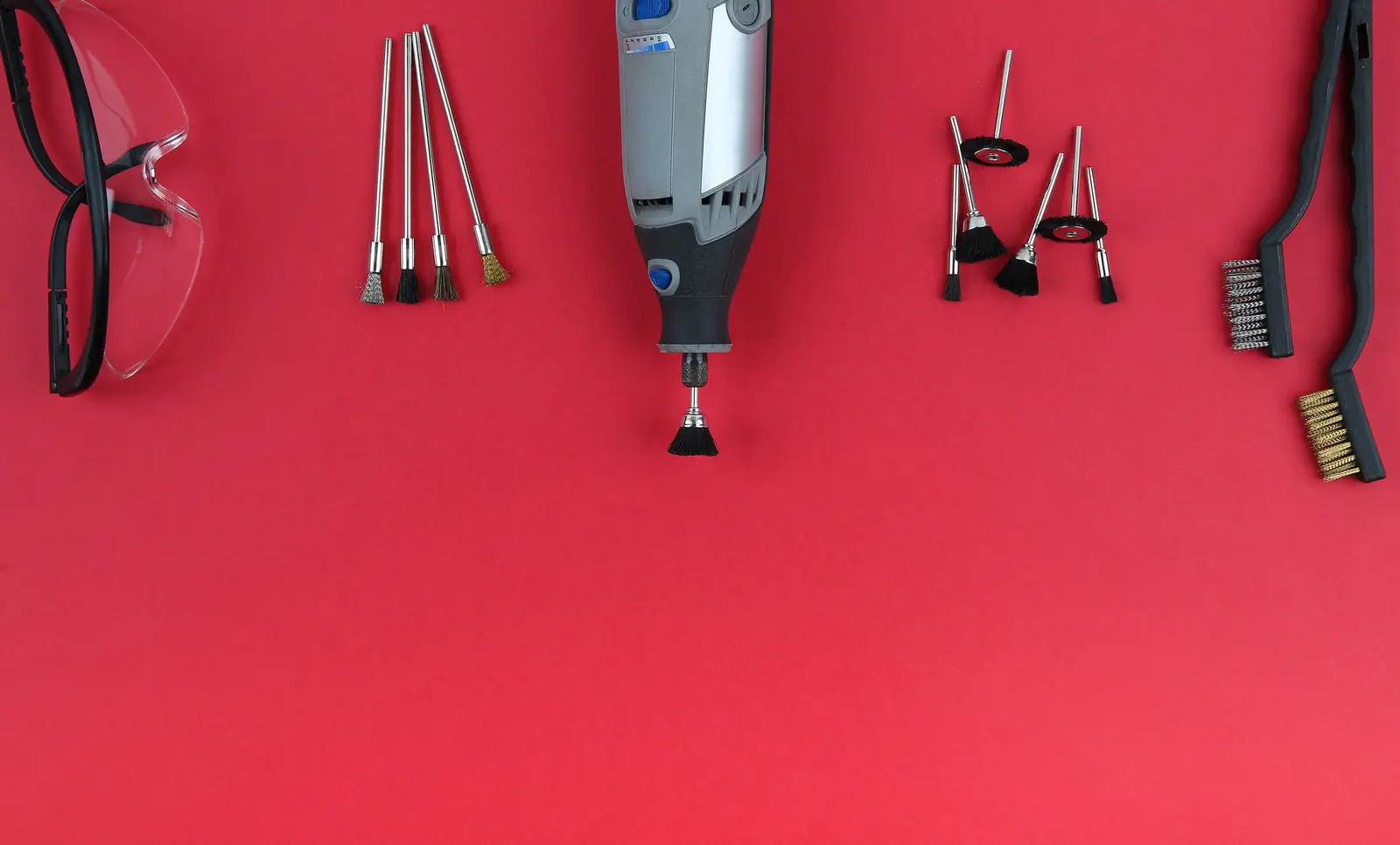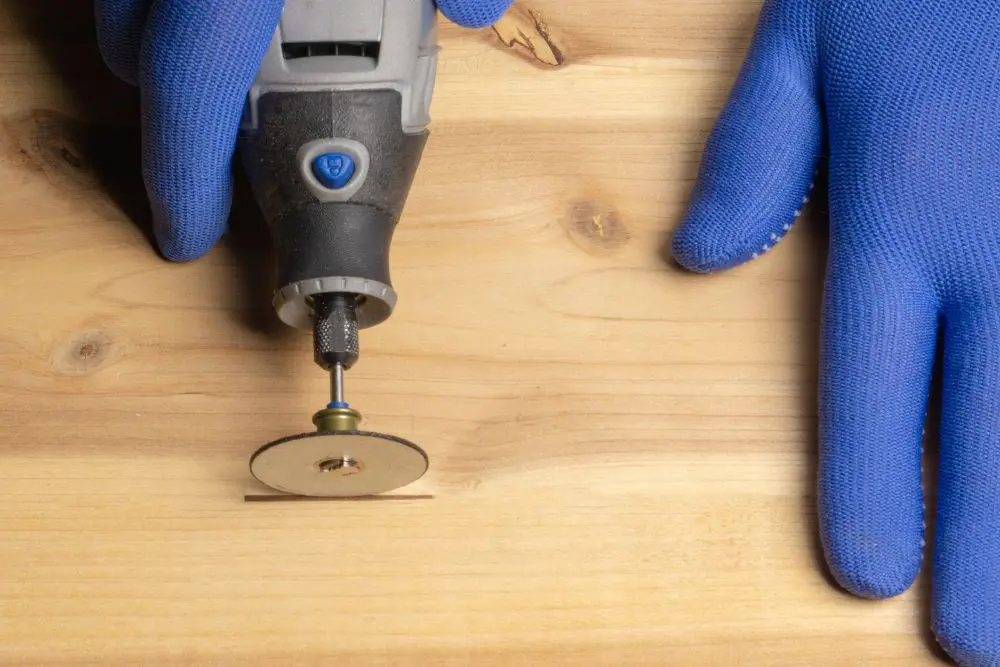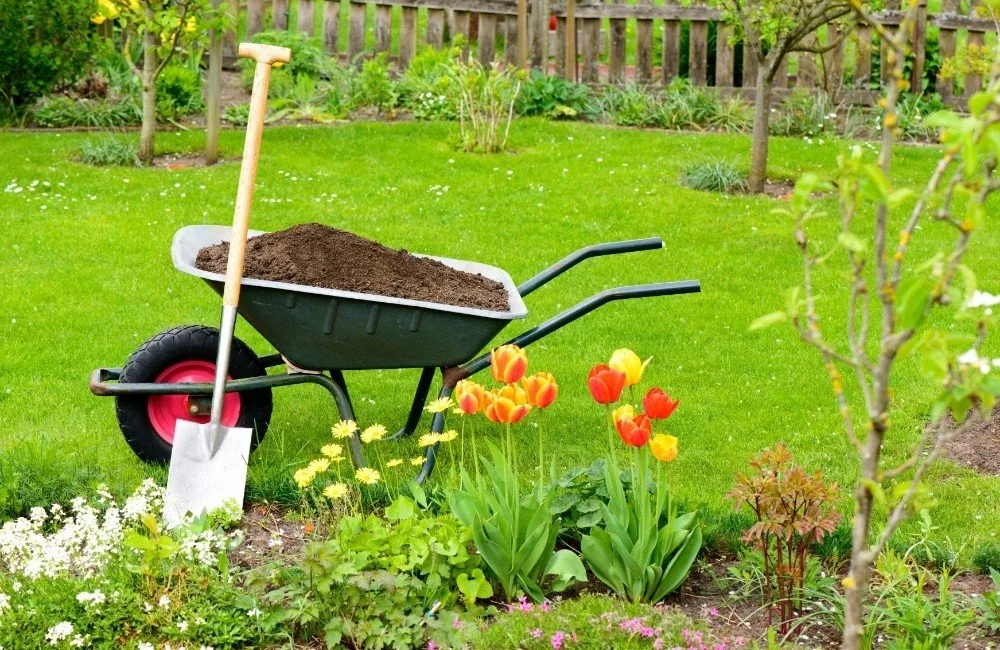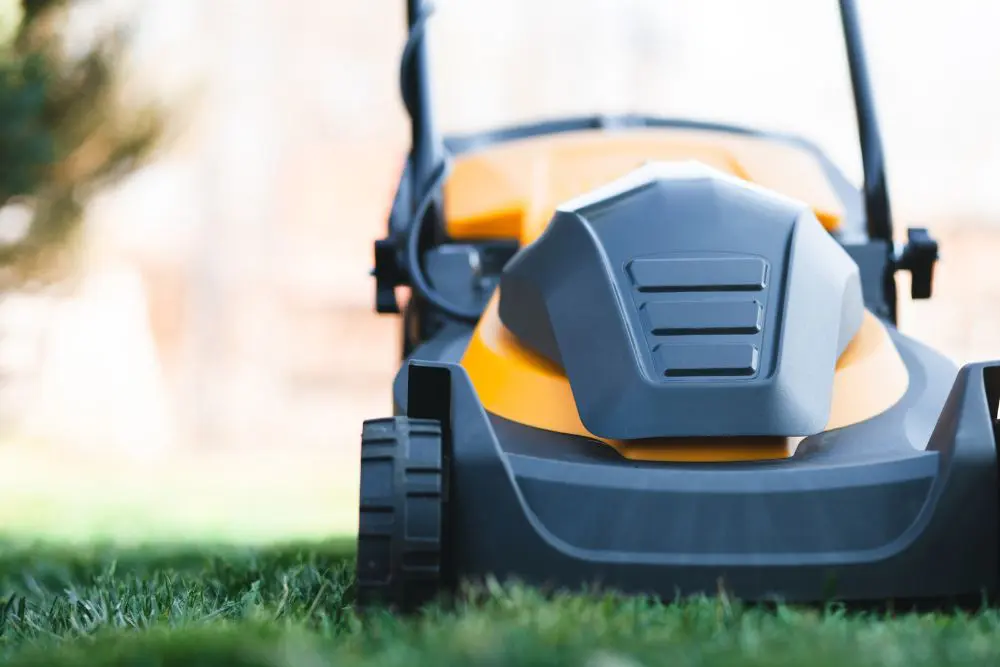A craftsperson is only as good as their rotary tool. That’s not quite how that old saying goes, but it might as well be. What’s true is rotary tools, sometimes just called Dremels, are an essential part of any toolbox, belonging right there besides your workhorse screwdriver, trusty hammer, and go-to electric drill. Given their power and versatility, they’re the perfect tool for DIY home improvement and personal craft projects. But what is a rotary tool?
In this article, we’ll answer questions like that, and what can you use one for. We even included some unusual uses for your new rotary tool, and what the difference is between a rotary tool and a Dremel. By the time you’ve finished reading, you’ll wonder how you made it this long without having a tool like this at your disposal.
What is a Rotary Tool?
Are you faced with a small cutting, grinding, or sanding project — too tough for simple sandpaper, or too light for a power saw? Or are you a craftsperson seeking the right tool for a carving or etching task in wood, stone, or even glass?
If any of the above sounds like you, it’s time to buy a rotary tool.
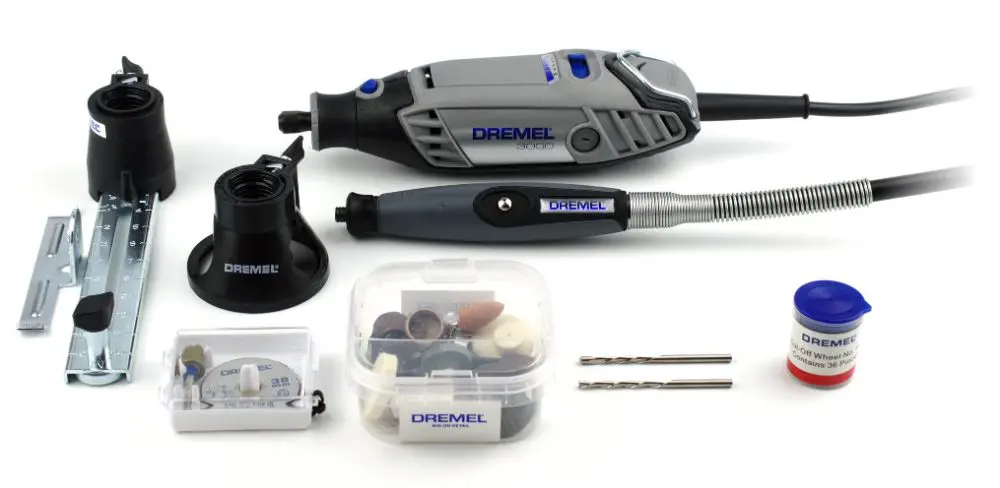
The most basic definition of a rotary tool is a handheld device with a fast-rotating motor connected to a spindle. Different accessories can be attached to the spindle, including polishing tools, cutting wheels, and sanding bits — contributing to a rotary tool’s versatility, no matter what’s on your to-do list.
We’ll tell you some more defining characteristics of rotary tools a bit later on, but first a word about Dremels.
Is a Rotary Tool the Same As a Dremel?
You may have noticed the word Dremel gets used almost interchangeably with “rotary tool.” The truth is, Dremel is actually a brand name. Dremels have come to dominate the rotary tool market to such an extent, that “Dremel” has come to mean rotary tool in the minds of many — like the Kleenex or Band-Aid of of these devices, if you will.
What’s important to know is that while all Dremels are rotary tools, not all rotary tools are Dremels.
Otherwise, there are three basic kinds:
- Die Grinder: The biggest and most powerful rotary tool
- Dremel-style Tools: The most common kind of rotary tool.
- Pencil Grinder: Small and inexpensive, pencil grinders are what you need when precision is everything. Some pencil grinders even work on compressed air.
And here’s what you need to know about die grinder vs. Dremel. Die Grinders are bigger, more powerful, and versatile in many ways than a Dremel or other device. Along with that, however, comes the cost.
If you’re in heavy industry, choose a die grinder. For the average around-the-house project? Choose Dremel.
Rotary Tool Specifications
So far, we’ve told you a bit about rotary tools — a fast-rotating motor connected to a spindle. Now, let’s take a deeper dive into what makes a rotary tool tick, or spin, as the case may be.
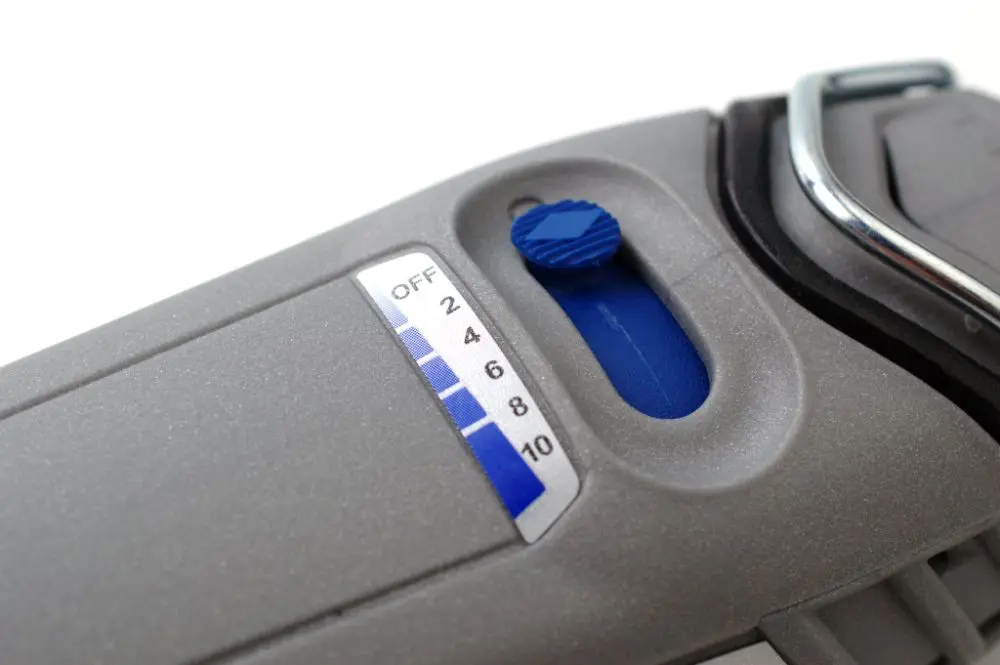
Engine Speed
Probably the most significant difference between rotary tools is engine speed or torque. Most rotary tool motors spin at about 20,000 RPM, but some reach up to 35,000 RPM, with variable speed motors. That’s a lot of power in a small package.
The Spindle
Next: the spindle. When the motor is running, the spindle spins. The spindle is threaded to accept the collet and collet nut, the parts that clamp down on your different attachments, or the “attach-y bit” for those less technically inclined.
In addition to the power button (what that does is pretty self-explanatory), you’ll find the following on the actual body of the rotary tool.
Speed Control
Often displayed as buttons- but sometimes as a slider- this control adjusts the motor’s speed. It’s important to adjust the speed depending on the task at hand, as well as the accessories you are using.
Now that we’re familiar with rotary tools let’s answer what they are used for.
Section 3
What is a Rotary Tool Used For?
There are several primary tasks well-suited for rotary tools.
1
Grinding and Sanding
With a grinding attachment, your rotary tool becomes a grinder. You can use a them for the following kinds of grinding projects:
- Adding or removing sharp edges
- Sharpening a blade of any kind
- Removing rust
Got some rust to grind off that old trailer hitch? There’s a Dremel for that. And just by adding a sanding attachment, like a disc, band, flap, or wheel, rotary tools are also an excellent choice for sanding,
2
Cutting and Carving
Rotary tools are especially useful for cutting, particularly in small, cramped areas. Plumbers, for example, use them a lot for work in tightly confined spaces, inside walls, under floors, or in bathroom and kitchen cabinets.
Here are some other everyday cutting tasks well-suited for a Dremel:
- Using a straight bit: rotary tools easily cut wood, drywall, and plasterboard.
- Using a cutting wheel: for metal and plastic
- Or try a carbide burr: for cutting metal — even steel!
Got some old corroded pipes to cut in a hard to reach area? It’s time for your rotary tool.
And for carving, fine craftspeople often take advantage of the versatile nature of rotary tools for intricate engraving or carving projects, adding detailed designs to wood, stone, and even glass.
If you’re working with glass, it’s essential to use a diamond point wheel or a diamond bit. Otherwise, the glass could break — very dangerous!
3
Drilling and Polishing
While it’s accurate rotary tools aren’t for heavy-duty drilling, rotary tools are more than adequate for most small drilling projects.
Choose from any of the drill or router bits that commonly come as Dremel tool accessories, and use your rotary tool for drilling holes in everything from wood and plastic to drywall.
Add a wire brush, polishing point, or polishing wheel to your Dremel and use it to polish or wax. Use a rotary tool to polish up some silverware, and marvel at how it shines.
Unusual Uses for a Rotary Tool
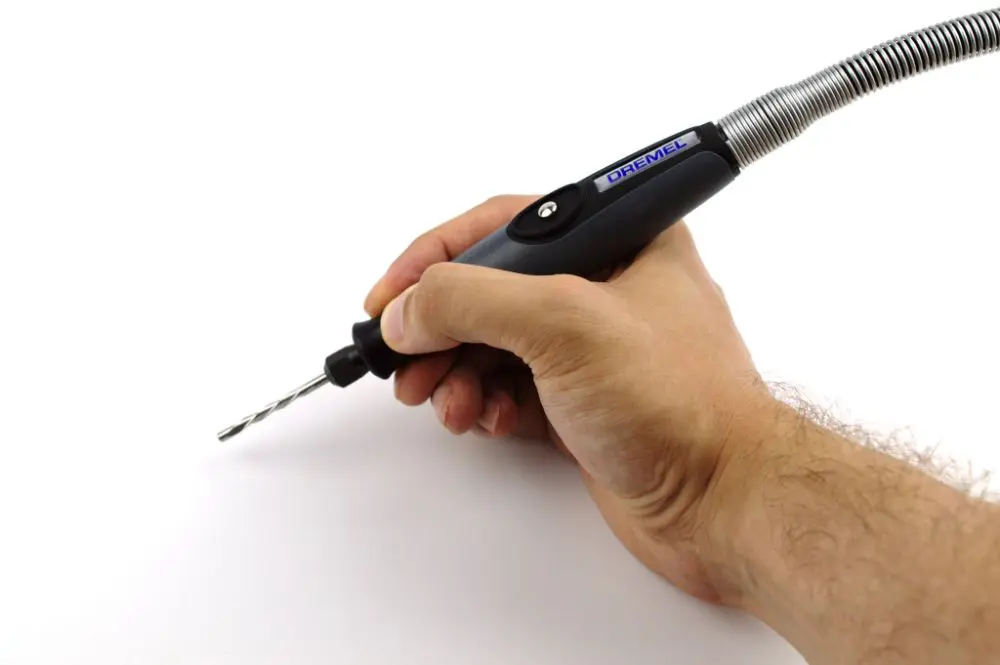
Those are the most common uses for a rotary tool. But rotary tools are also used for various other tasks, including:
- Cutting curves in tile (just add a tile-cutting bit)
- Sharpening your chainsaw
- Trimming your nose hairs
Ok, that last one’s a joke (seriously, folks — don’t try that at home). But that’s not all. There’s even more you can do with these all-in-one multipurpose tools:
Cut leather
And emboss your initials. You can do that with the right attachments.
Make necklaces and jewelry
Collect rocks and other shiny things? Use a fine-precision rotary tool accessory to drill holes in these objects for necklaces, bracelets, and earrings.
Custom engrave furniture
Get a rockin’ deal on a new coffee table, but it needs a little TLC? Add custom engraving with your Dremel.
Have we convinced you that rotary tools are versatile and easy to use for a wide range of home improvement and craft projects? The thing is, they’ll let just anybody use one, no training required. Here are some safety precautions to be aware of when using a rotary tool.
Rotary Tool Safety Precautions
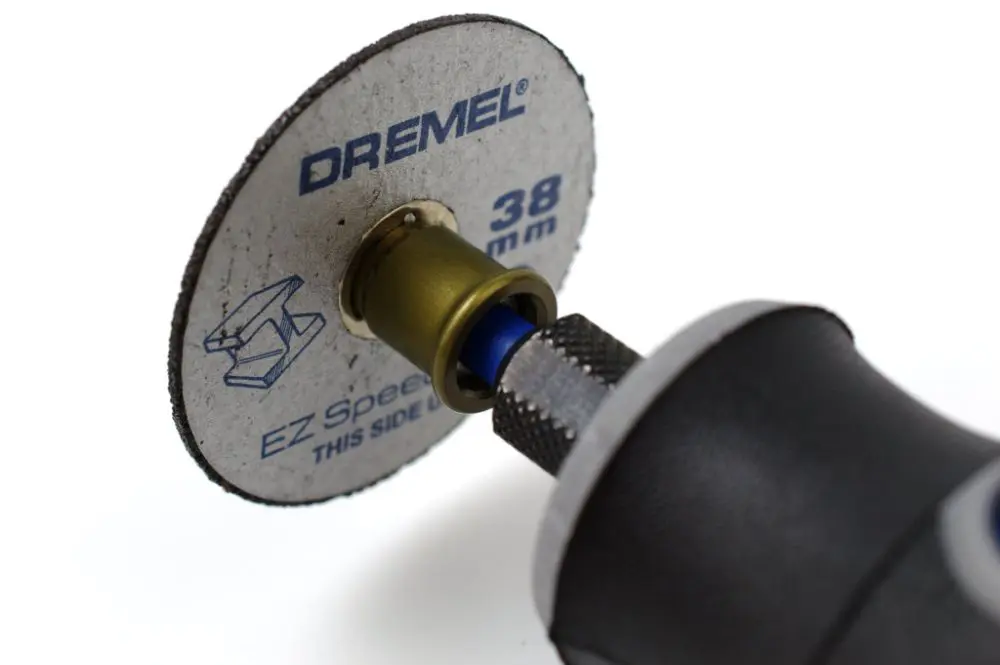
The first safety precaution when using a rotary tool is to ensure you are in a well-ventilated area to keep from inhaling any fine particulates kicked up by the device. Here are some additional pointers:
Face shield, safety glasses, and earplugs required.
To protect your eyes from some tiny shard of whatever you happen to be drilling or grinding, always use a face shield and safety glasses when using your rotary tool. Rotary tools also get pretty loud, especially the high-torque variety, protecting your hearing with earplugs or headphones.
Gloves and Skin Protection
Like we said, rotary tools can kick up a lot of fine particles into the air. Wear gloves and long sleeves when using one, especially when working with fiberglass. If your hair is long, pull it back securely. Getting your hair caught in a Dremel while it’s in operation would be catastrophic.
Some additional safety guidelines include the following. Always turning the tool on before putting it in contact with whatever material you’re working with. Once done, don’t forget to turn off and unplug the device before switching out attachments. You don’t want it kicking on accidentally with your fingers around the spindle area.
Gear Up
There you have it. Everything you need to know about what a rotary tool is and how to use it, an all-in-one drill, grinder, sander, and polisher, perfect for your next task.
Further Reading
